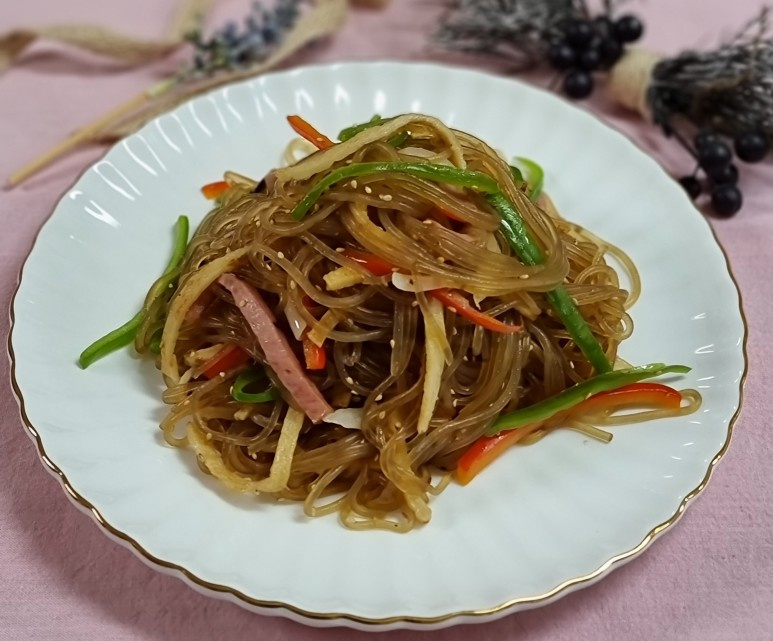
Making japchae. If you boil the glass noodles in soy sauce water
Japchae is delicious whenever you eat it, but it's a food that requires a lot of work, so you don't usually make it. That's a lot of preparation.
The process of preparing meat and vegetables, frying glass noodles, frying them in the sauce, and mixing them with vegetables is one of the dishes that I don't like to cook often.
I'm going to make japchae in a way that's easy to finish just by preparing vegetables and mushrooms and stir-frying them, boiling glass noodles and mixing them with vegetables.
4 serving
Within 30 minutes

소은맘
- Ingredients
-
-
Cellophane noodles150g
-
onion1/2ea
-
pepper1ea
-
Paprika1ea
-
Ham1ea
-
fish cake1ea
-
Shiitake mushroom5ea
-
Sesame oil1TS
-
Sesamelittle
-
ground pepperlittle
-
Bottled water1.5L
-
Soy sauce100ml
-
brown sugar7~8spoon
-
Soy sauce1spoon
-
- Cooking Steps
-
STEP 1/15Chop the onions.
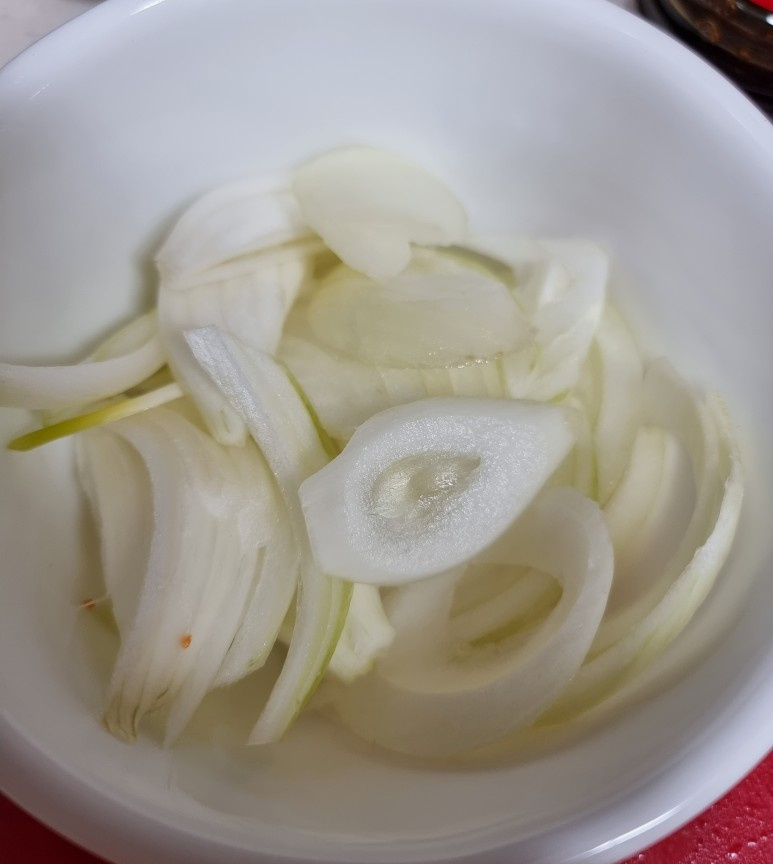 STEP 2/15Slice bell pepper, paprika, ham, and fish cake into equal lengths.
STEP 2/15Slice bell pepper, paprika, ham, and fish cake into equal lengths.
Soak dried shiitake mushrooms in warm water in advance and season them with soy sauce and sesame oil.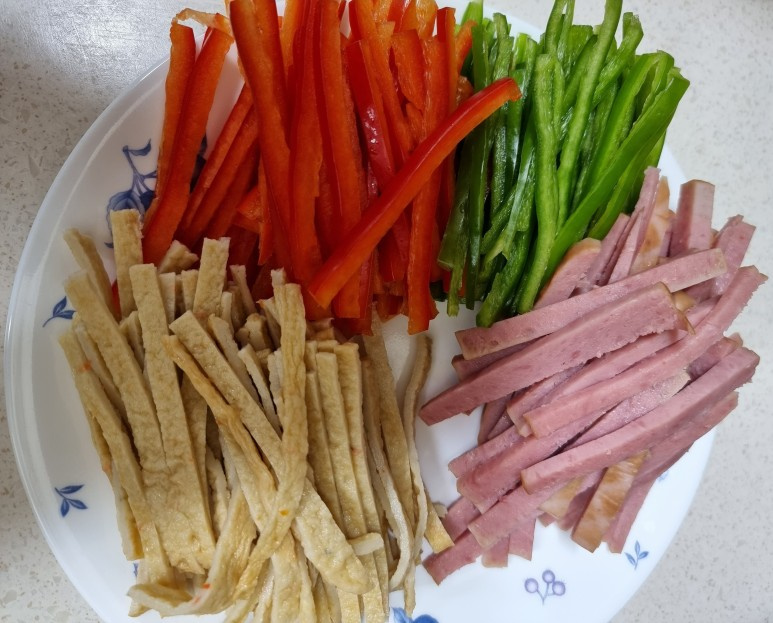 STEP 3/15It's usually boiled in plain water, but I boil it in soy sauce water, so I don't have to stir-fry the glass noodles again in soy sauce.
STEP 3/15It's usually boiled in plain water, but I boil it in soy sauce water, so I don't have to stir-fry the glass noodles again in soy sauce.
It'll be much easier if you don't stir-fry it again in the soy sauce sauce.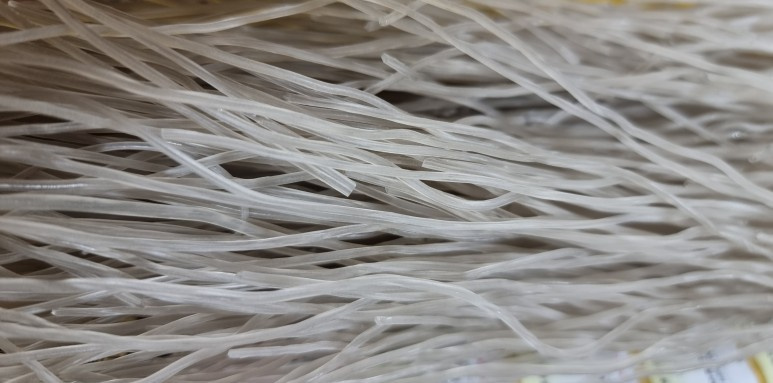 STEP 4/15Add 100ml of dark soy sauce and 7-8 spoons of brown sugar to 1.5 liters of water
STEP 4/15Add 100ml of dark soy sauce and 7-8 spoons of brown sugar to 1.5 liters of water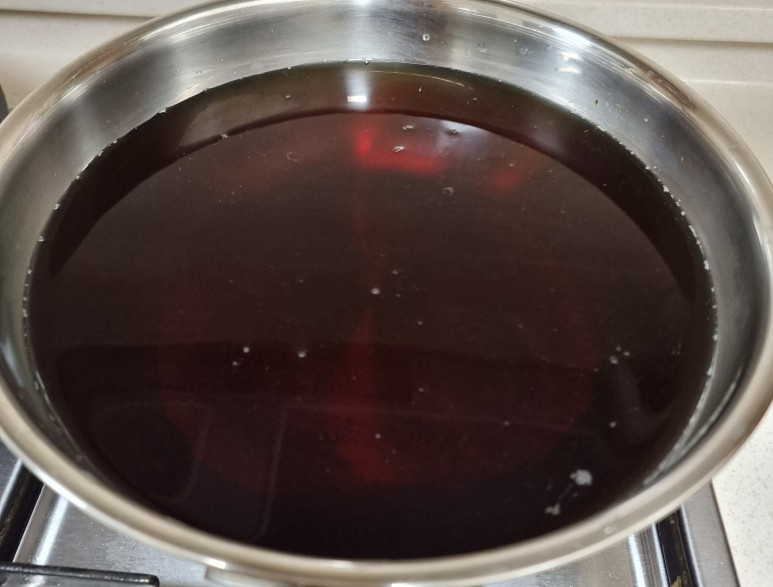 STEP 5/15When the soy sauce water boils, add the glass noodles and boil it for about 8 minutes.
STEP 5/15When the soy sauce water boils, add the glass noodles and boil it for about 8 minutes.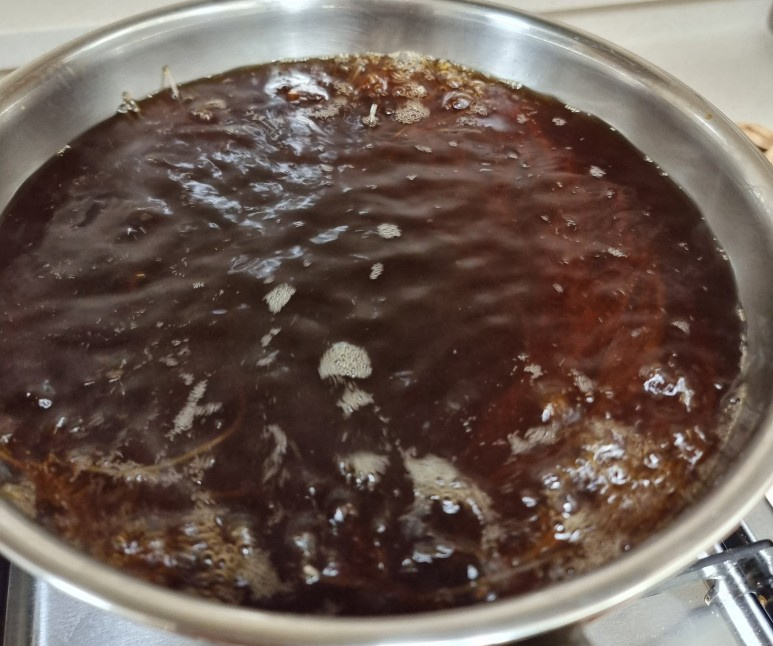 STEP 6/15Please make it to your taste in the degree of boiling.
STEP 6/15Please make it to your taste in the degree of boiling.
If you boil it in soy sauce like this, the seasoning is moderate and the color is a bit delicious, so it becomes a japchae that you buy at a restaurant.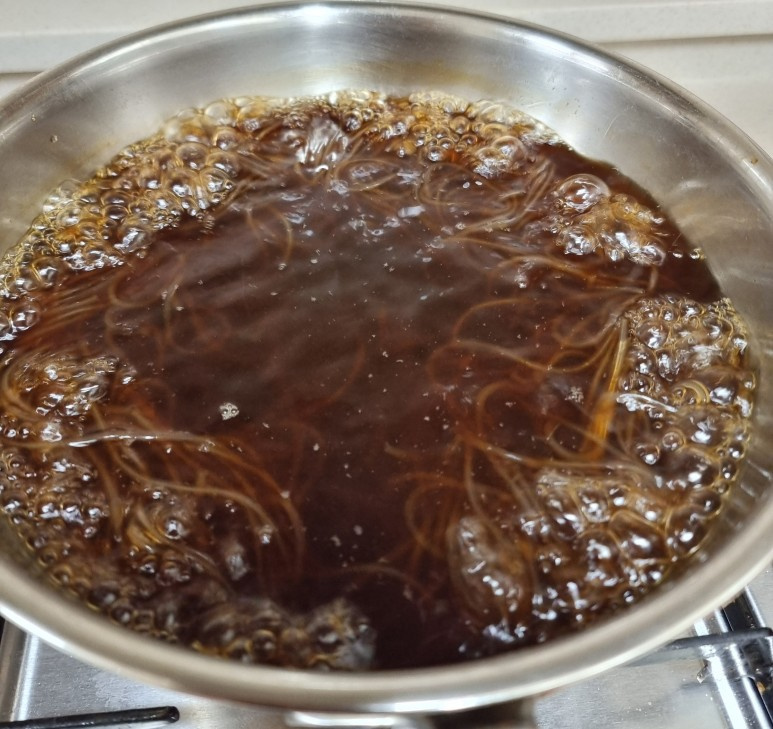 STEP 7/15Never rinse the cooked glass noodles in water, support them in a strainer to remove moisture, and mix them with 1 tablespoon of sesame oil and 1 tablespoon of soy sauce. Season before it hardens. It's hot, so wear gloves and do it.
STEP 7/15Never rinse the cooked glass noodles in water, support them in a strainer to remove moisture, and mix them with 1 tablespoon of sesame oil and 1 tablespoon of soy sauce. Season before it hardens. It's hot, so wear gloves and do it.
It's coated with sesame oil and stays firm over time.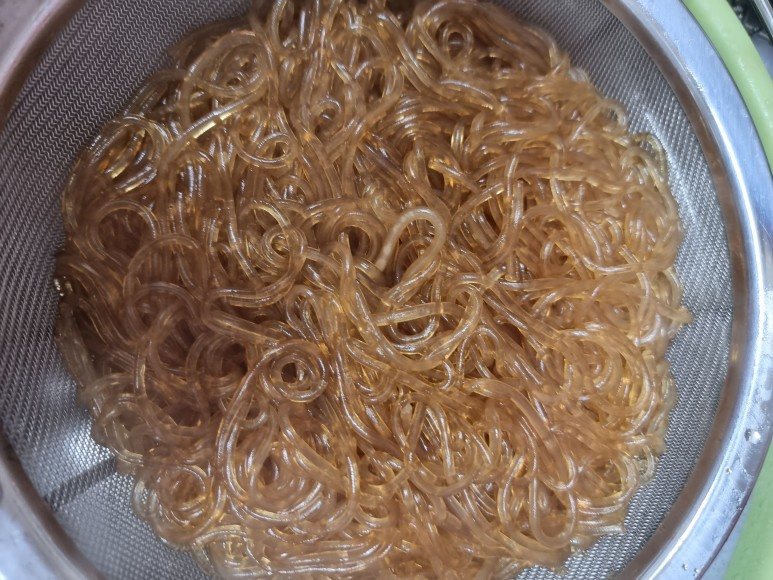 STEP 8/15If you do this, you can taste the chewy taste even after a few days.
STEP 8/15If you do this, you can taste the chewy taste even after a few days.
And if you don't like it after tasting it, you can add more soy sauce and sugar.
I don't think it's enough, so I don't think it's enough.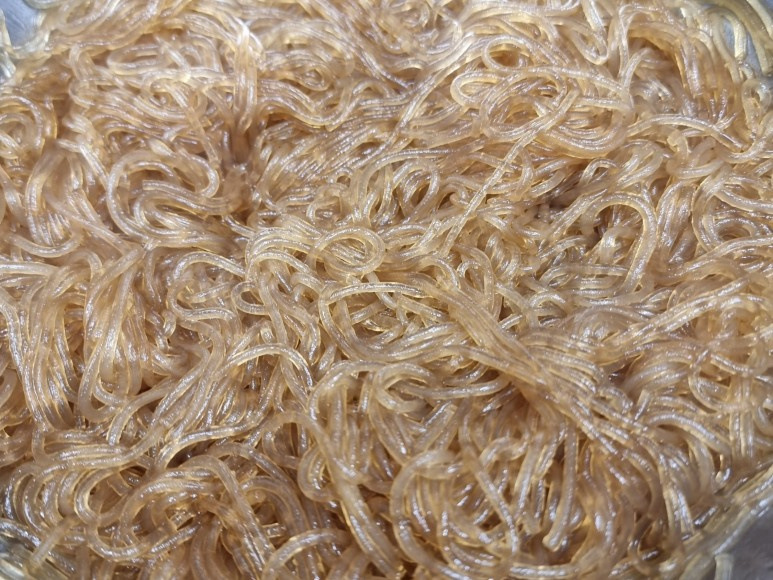 STEP 9/15Don't the colors of the vegetables look so fresh.
STEP 9/15Don't the colors of the vegetables look so fresh.
Stir-fry each of the shredded vegetables.
Don't stir-fry it all at once, but you have to stir-fry it separately so that the color is alive and the texture can be chewed.
And don't stir-fry a lot of vegetables, and you can eat them raw, so you have to stir-fry bell peppers and paprika just enough to blow away moisture to make them chew better.
When you stir-fry it, add a bit of salt.
The glass noodles are seasoned with soy sauce, so please season the vegetables separately with salt. STEP 10/15And then it's really simple.
STEP 10/15And then it's really simple.
In a wide bowl, stir-fry vegetables and glass noodles and mix well.
Sprinkle sesame oil, sesame seeds, and pepper to make a light and chewy japchae.
The glass noodles were not stir-fried separately, so it was less greasy and boiled in soy sauce water, and a little color was applied to it, making the japchae look more delicious.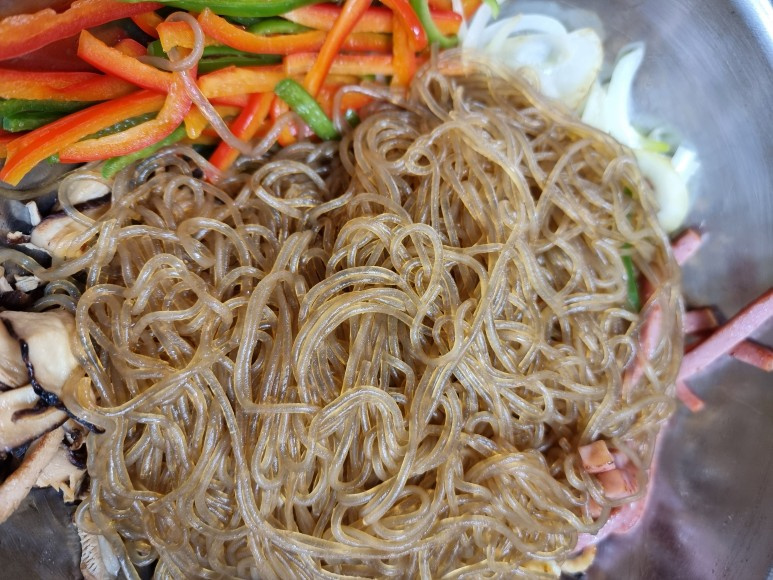 STEP 11/15It's a simple japchae made with ingredients in the refrigerator, but it's not greasy, it's light and delicious.
STEP 11/15It's a simple japchae made with ingredients in the refrigerator, but it's not greasy, it's light and delicious.
Even if you don't stir-fry it in soy sauce, you can see the gloss flowing.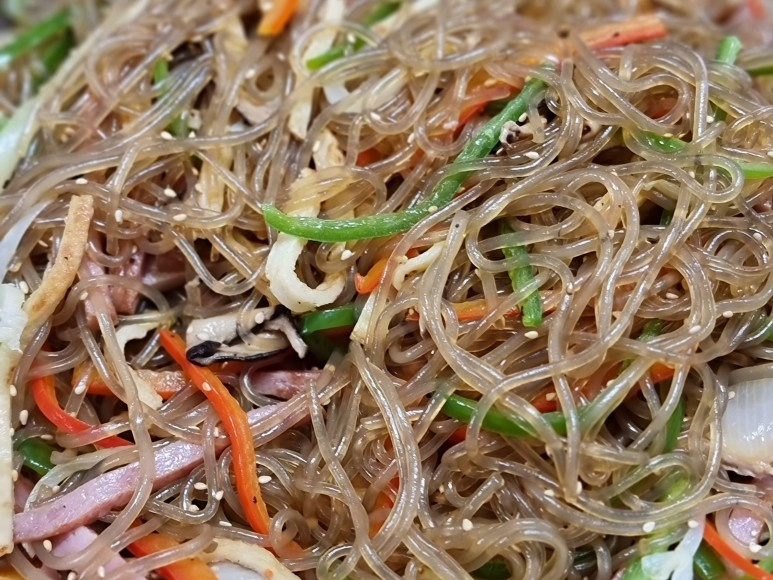 STEP 12/15The glass noodles are chewy and the vegetables are not stir-fried a lot, so the texture of the noodles is very good.
STEP 12/15The glass noodles are chewy and the vegetables are not stir-fried a lot, so the texture of the noodles is very good.
The taste of the glass noodles, which is boiled in soy sauce water and has a subtle soy sauce scent, is really delicious.
The colors of paprika are so fresh and delicious.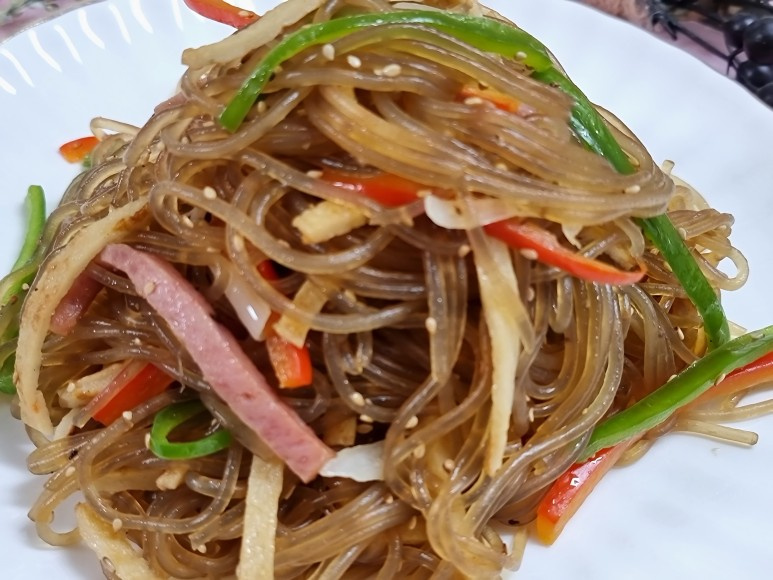 STEP 13/15It's not salty, so it's so good to just eat it and it's so good to eat it with rice.
STEP 13/15It's not salty, so it's so good to just eat it and it's so good to eat it with rice.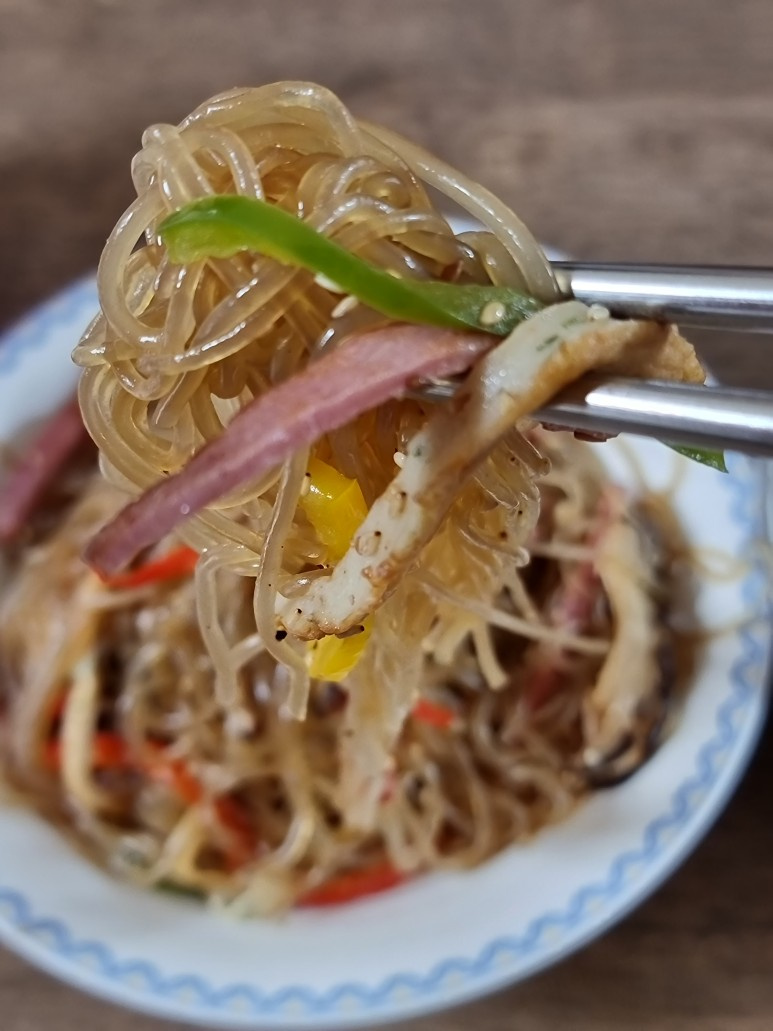 STEP 14/15Even if you don't have meat, you can simply make japchae with the ingredients in the fridge
STEP 14/15Even if you don't have meat, you can simply make japchae with the ingredients in the fridge
Don't make it on a special day, and don't simply stir-fry it in soy sauce with ingredients at home, and boil it in soy sauce to season it at once and make it chewy.
Don't stir-fry it again with soy sauce.
Just boiling it in soy sauce makes it glossy, and the liver is moderately peary, and above all, it's a good japchae because it's not greasy.
Don't bother to stir-fry it, and from now on, simply boil it in soy sauce water to make japchae.
Boil, stir-fry, and mix, and you're done.
Don't stir-fry any more.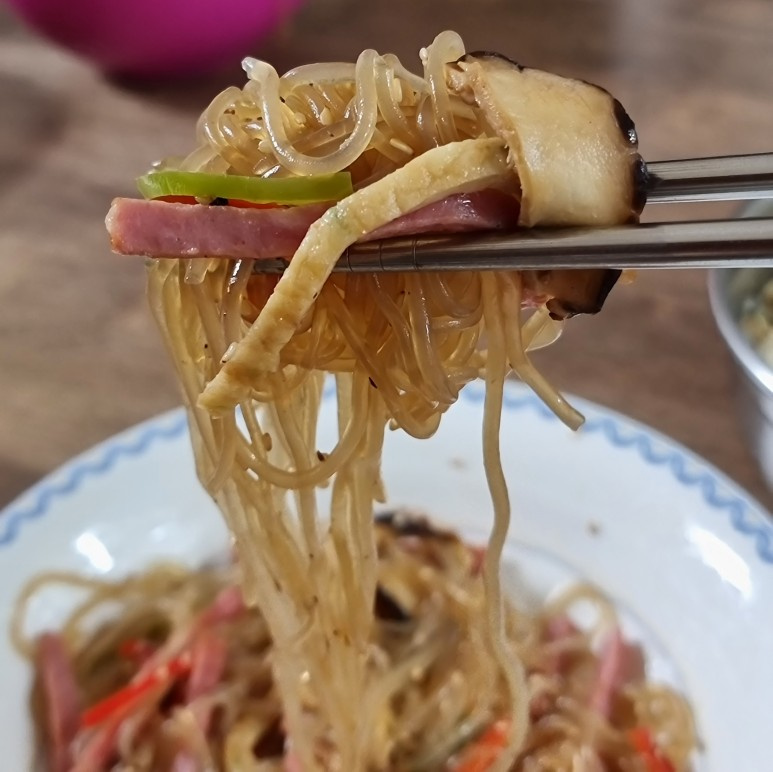 STEP 15/15And if you have leftover japchae, put it in the freezer, take it out, and stir-fry it slightly, and it tastes the same. Leave plenty in the freezer.
STEP 15/15And if you have leftover japchae, put it in the freezer, take it out, and stir-fry it slightly, and it tastes the same. Leave plenty in the freezer.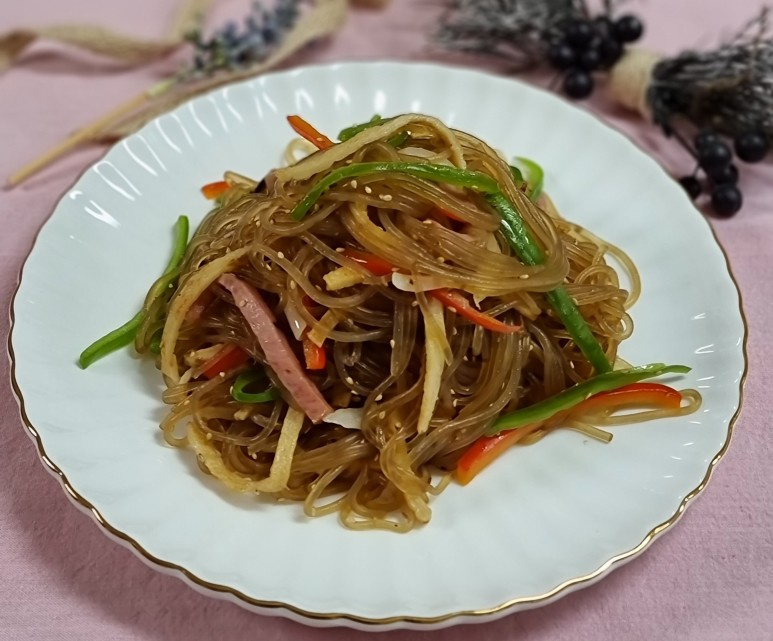 The glass noodles were boiled in soy sauce from the beginning, so the cooking time was shortened, and the color looked delicious, and it didn't spread.
The glass noodles were boiled in soy sauce from the beginning, so the cooking time was shortened, and the color looked delicious, and it didn't spread.
- Cooking review
-
5.00score
-

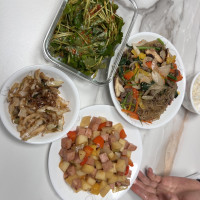 708*****scoreI made it with beef, but it really helped me boil the noodles It turned out delicious, so I ate it well2022-06-30 20:19
708*****scoreI made it with beef, but it really helped me boil the noodles It turned out delicious, so I ate it well2022-06-30 20:19 -
 524*****scoreIt's really good to boil noodles in soy sauce water Do you boil the noodles in soy sauce water without soaking them separately?2022-06-29 22:11
524*****scoreIt's really good to boil noodles in soy sauce water Do you boil the noodles in soy sauce water without soaking them separately?2022-06-29 22:11
-
- Bibimbap Recommended recipe
-
-
1
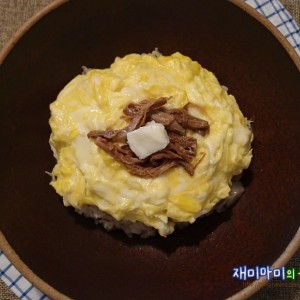 Jangjorim Butter Bibimbap: The rice we ate at School Food5.00(28)
Jangjorim Butter Bibimbap: The rice we ate at School Food5.00(28) -
2
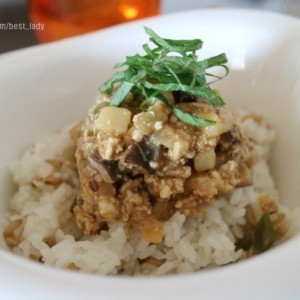 Vegetable Kang Doenjang & Kang Doenjang Bibimbap with potatoes a4.94(17)
Vegetable Kang Doenjang & Kang Doenjang Bibimbap with potatoes a4.94(17) -
3
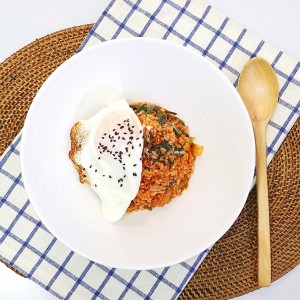 [Honbab Menu] How to make simple young radish bibimbap, how to m4.87(94)
[Honbab Menu] How to make simple young radish bibimbap, how to m4.87(94) -
4
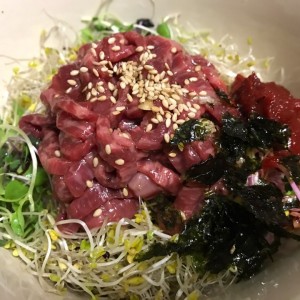 Sprout Raw Beef Sliced Raw Fish Bibimbap4.90(20)
Sprout Raw Beef Sliced Raw Fish Bibimbap4.90(20)
-
- chicken Recommended recipe
-
-
1
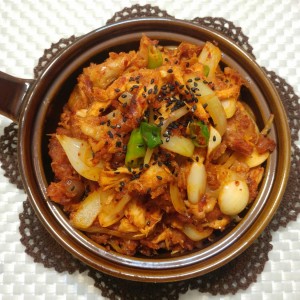 [Simple] Make delicious side dishes with leftover chicken5.00(11)
[Simple] Make delicious side dishes with leftover chicken5.00(11) -
2
 Healthy Chicken Made with Air Fryer Garlic soy sauce chicken4.83(6)
Healthy Chicken Made with Air Fryer Garlic soy sauce chicken4.83(6) -
3
 Making wingbong soy sauce chicken5.00(11)
Making wingbong soy sauce chicken5.00(11) -
4
 How to make fried chicken at home5.00(8)
How to make fried chicken at home5.00(8)
-